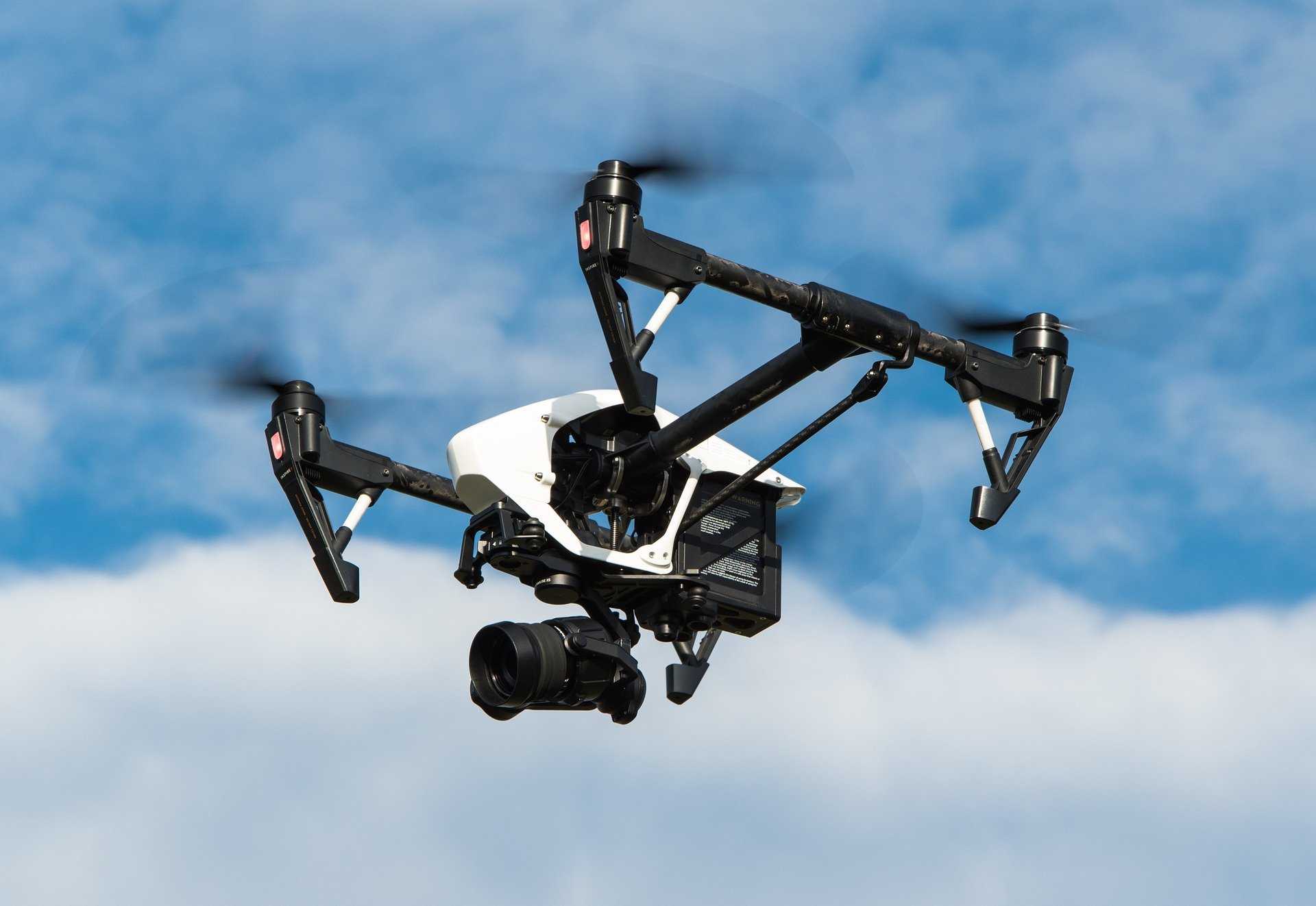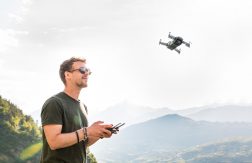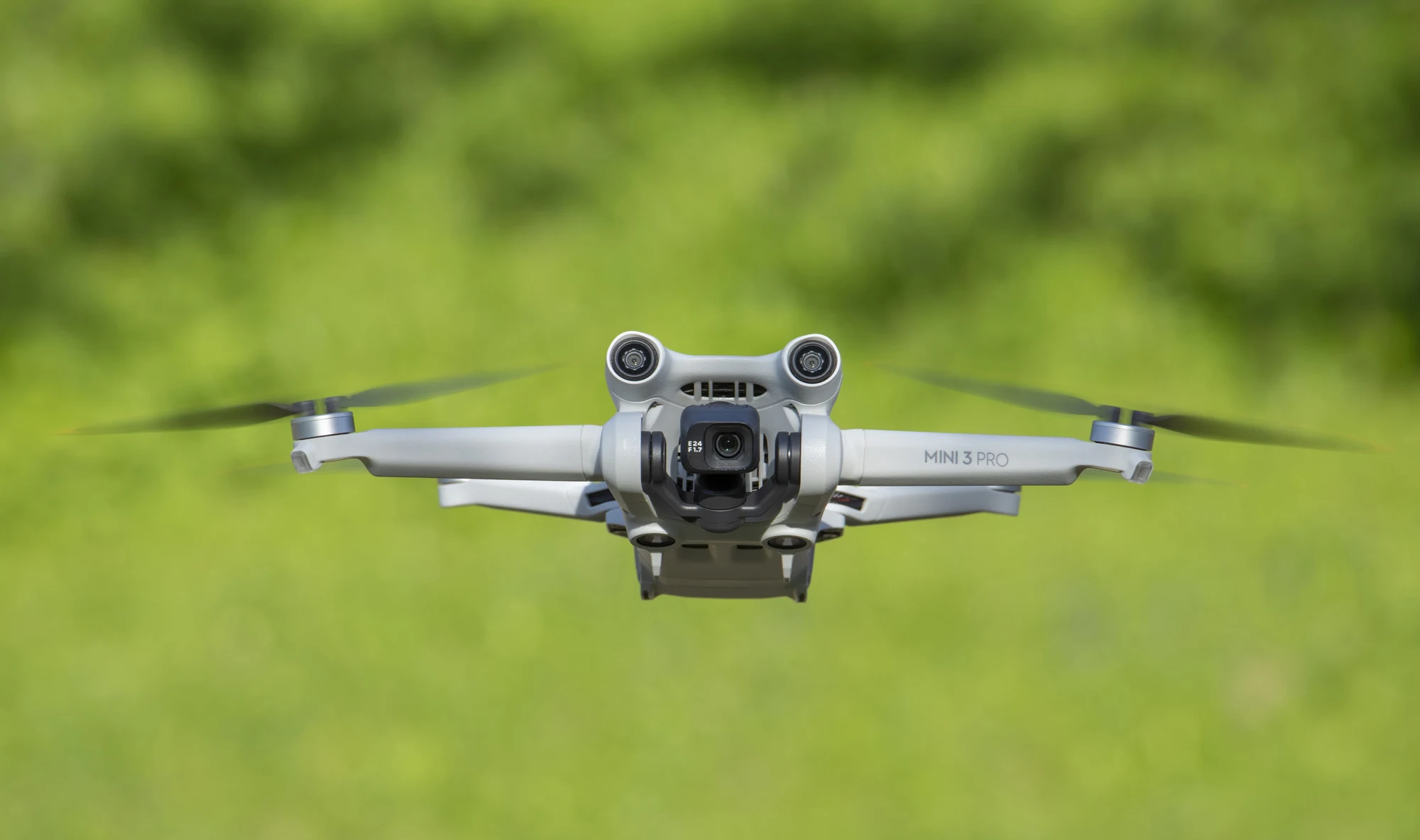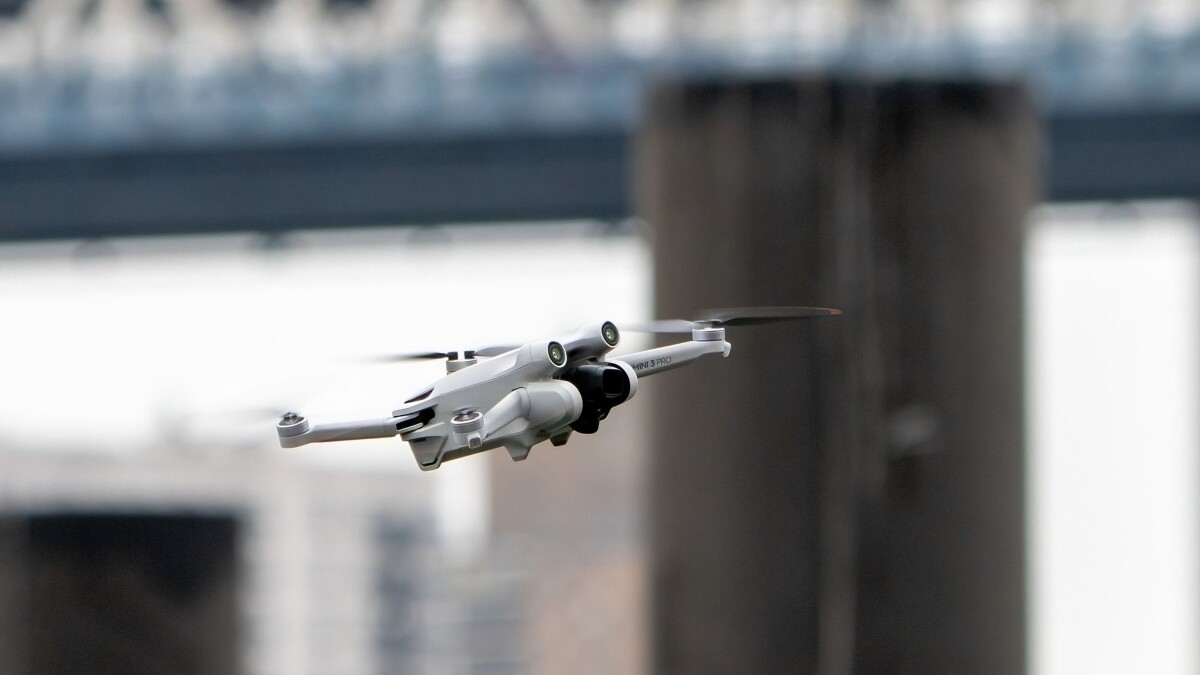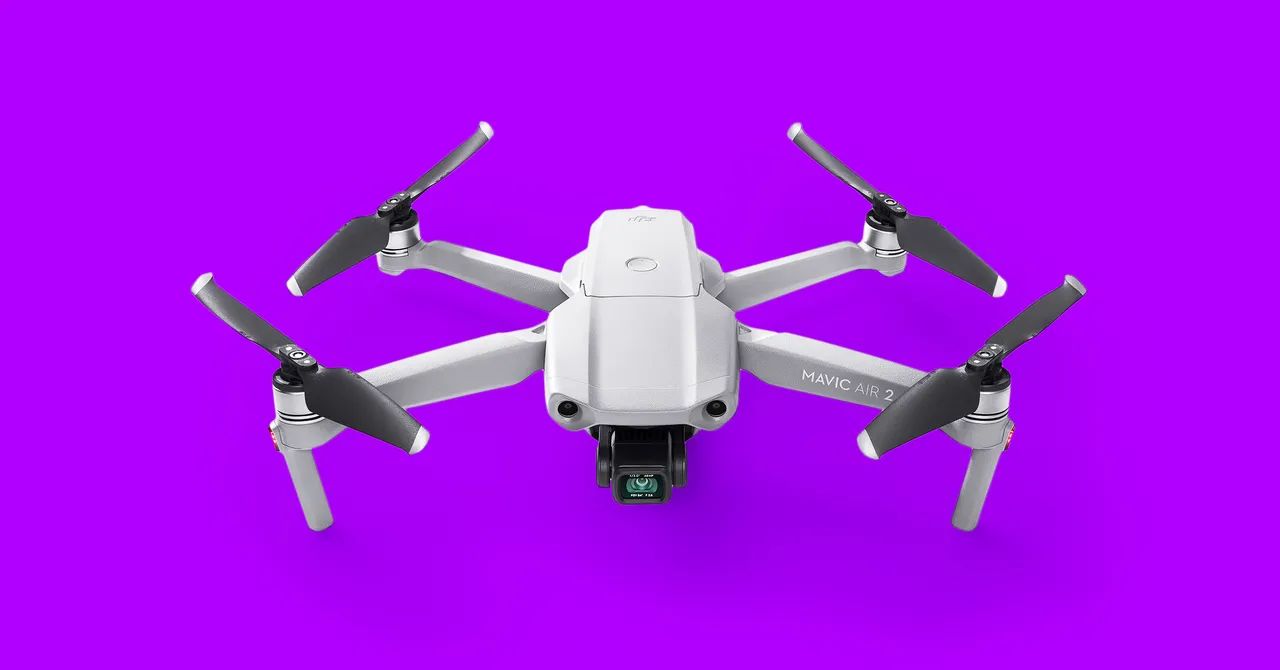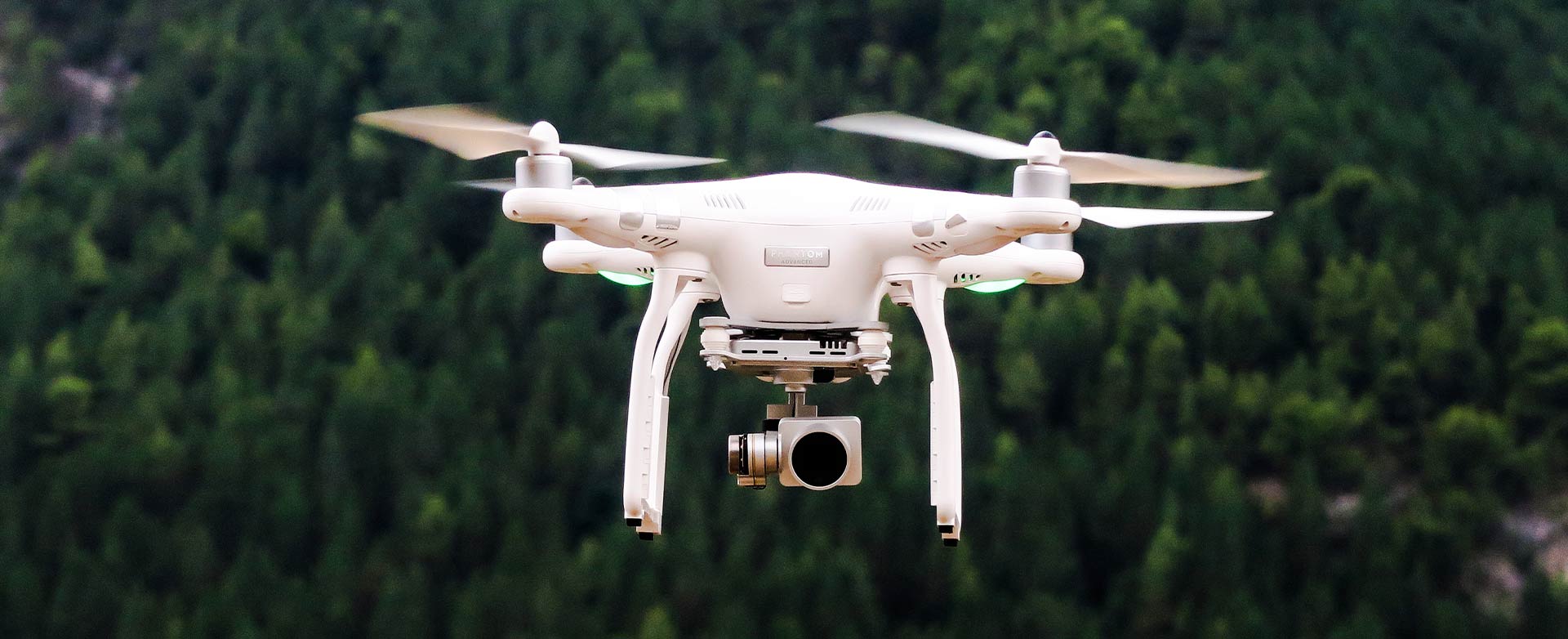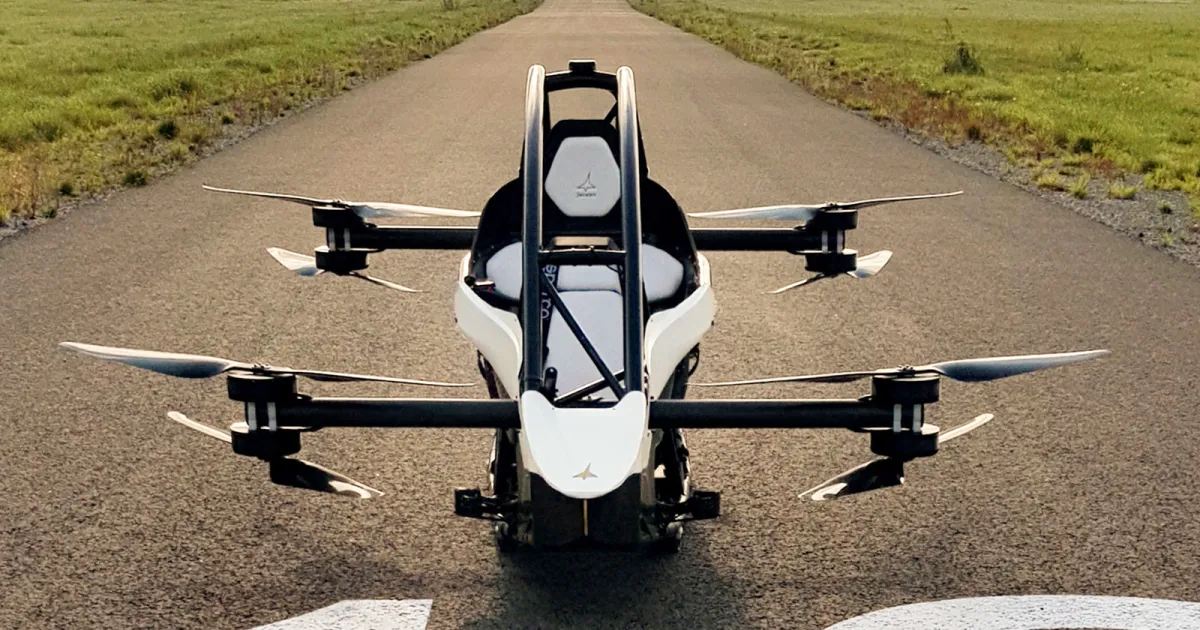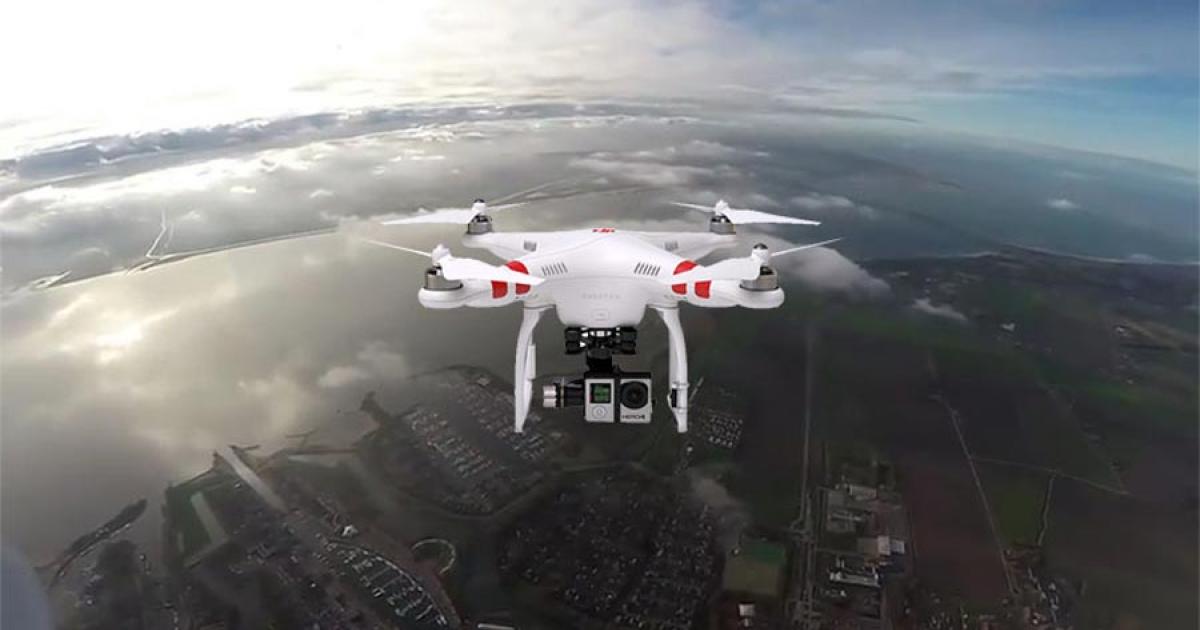Introduction
Flying a drone can be an exhilarating experience, providing a unique perspective from the skies. However, it is crucial to understand and adhere to the rules and regulations set forth by aviation authorities to ensure both the safety of others and the proper use of this technology. This article aims to provide a comprehensive guide on the rules for flying a drone.
Whether you are a beginner or an experienced drone enthusiast, it is essential to have a solid foundation of knowledge to operate a drone responsibly and legally. Understanding the basics, such as the importance of registering your drone, familiarizing yourself with local laws, and maintaining safe practices, will contribute to a positive and enjoyable drone flying experience.
By following the rules, you not only safeguard the well-being of those around you but also protect the reputation of the drone community as a whole. This guide will walk you through the various regulations and best practices that should be followed when operating a drone.
The rules outlined in this article are applicable to most countries; however, it is crucial to remember that regulations can vary across regions. It is your responsibility as a drone pilot to educate yourself about the specific rules and laws in your area.
So, if you are ready to take to the skies with your drone, let us delve into the essential rules and guidelines that will ensure a safe and enjoyable drone flying experience.
Understanding the Basics
Before you take flight, it is essential to have a solid understanding of the fundamental aspects of drone operation. Familiarize yourself with the various components of a drone, such as the controller, propellers, and battery, to ensure you can operate it safely and effectively.
Additionally, it is crucial to have a basic understanding of how drones maneuver in the air. Learn about the different flight modes, such as manual control, altitude hold, or GPS-assisted flight, and practice flying your drone in open areas to gain confidence and improve your piloting skills.
Another important aspect to consider is the weather conditions. Ensure you are aware of the wind speed and direction, as strong winds can significantly impact your ability to control the drone. It is generally recommended to fly in calm weather conditions, avoiding strong gusts or stormy weather altogether.
Moreover, familiarize yourself with the concept of “line of sight.” As a general rule, you should always maintain visual contact with your drone to ensure you can see and navigate it safely. Flying beyond your line of sight can lead to accidents and violations of regulations.
Understanding these basic principles will lay the foundation for safe and responsible drone operation. As you become more familiar with the basics, you can progress to more advanced flying techniques and maneuvers.
Registering your Drone
One of the first steps you should take as a drone pilot is to check if registration is required for your drone. In many countries, drones above a certain weight threshold must be registered with the appropriate aviation authority. Registering your drone ensures that you are complying with the aviation regulations and can be easily identified as the owner of the drone.
To register your drone, you will typically need to provide some basic information, such as your name, address, and contact details. You may also need to provide the make, model, and serial number of your drone. Registration fees may apply, and the validity period of the registration will vary depending on your location.
Registering your drone serves several important purposes. Firstly, it helps authorities keep track of the number and types of drones in operation, allowing them to implement appropriate safety measures. Secondly, it enables the authorities to trace the owner in case of any accidents or incidents involving the drone. Lastly, it promotes responsible drone ownership by ensuring that pilots adhere to regulations.
Before you take your drone out for its first flight, be sure to complete the registration process as required by your local aviation authority. Failure to register your drone when required may result in legal consequences and potentially spoil your drone flying experience.
Remember to keep your registration documents readily available when you go out flying your drone. It is important to be able to provide proof of registration if requested by authorities.
By registering your drone, you not only comply with the law, but you also contribute to the overall safety and accountability of the drone community.
Getting Familiar with Local Laws
Before you take your drone for a flight, it is crucial to familiarize yourself with the drone laws and regulations in your specific locality. Each country may have its own set of rules governing the operation of drones, and it is your responsibility as a drone pilot to know and comply with these regulations.
Start by researching the aviation authority or regulatory body in your country or region. Visit their official website to find specific drone guidelines and regulations that apply to your area. Look for information regarding flight restrictions, permitted altitudes, designated flying zones, and any additional requirements or restrictions that may be in place.
Some common regulations that you may come across include restrictions on flying near airports, government buildings, or sensitive areas. Additionally, there may be rules regarding flying over public gatherings, private property, or wildlife sanctuaries.
While researching local laws, it is important to keep in mind that drone regulations can vary not only at the country level but sometimes even at the state or municipal level. Therefore, it is crucial to be aware of any specific rules that may apply to your location.
Understanding and following the local laws and regulations demonstrates your commitment to responsible drone operation. It also ensures the safety and privacy of others and helps maintain a positive reputation for the drone community.
Regularly check for updates or changes in drone regulations in your area. It is important to stay up-to-date with any new rules or amendments that may be introduced. Joining online forums or communities dedicated to drone enthusiasts can also provide valuable insights and updates on local regulations.
Ultimately, the goal is to be a responsible drone pilot who respects the laws and regulations in place. By doing so, you can enjoy flying your drone with peace of mind, knowing that you are operating within the legal boundaries and prioritizing the safety of yourself and others.
Flying Within Visual Line of Sight
One of the fundamental rules for drone operation is to fly within visual line of sight (VLOS) at all times. This means that you should be able to see your drone with unaided vision throughout the duration of the flight. Flying beyond visual line of sight is not only unsafe but also a violation of regulations in most countries.
Operating your drone within visual line of sight is crucial for maintaining control and avoiding potential collisions. When you can see your drone directly, you have a better perception of its position, orientation, and surrounding obstacles. This allows you to react and maneuver your drone safely.
While operating within visual line of sight, it is important to maintain a clear line of sight without any obstructions. Avoid flying your drone behind buildings, trees, or other obstacles that could block your view. Losing sight of your drone can result in loss of control and potential damage or accidents.
It is also worth noting that using binoculars, telescopes, or any other visual aids to extend your line of sight is generally not permitted. The concept of visual line of sight is based on unaided vision, ensuring that you have a direct and clear view of your drone.
By adhering to the rule of flying within visual line of sight, you decrease the likelihood of accidents and promote safe drone operations. Always maintain a clear view of your drone during your flights, ensuring a positive experience for yourself and those around you.
Maintaining a Safe Distance from People and Property
As a responsible drone pilot, it is essential to maintain a safe distance from people and property while flying your drone. This rule not only ensures the safety and privacy of others but also helps to prevent accidents and potential damage.
When flying your drone, always keep a significant distance from individuals, especially in crowded areas or public spaces. A safe rule of thumb is to stay at least 30 meters away from people and avoid flying directly over them. This precaution minimizes the risk of injury in case of a malfunction or unexpected behavior of the drone.
Similarly, it’s important to respect private property and avoid flying over or near someone’s land without permission. Fly responsibly within designated areas or public spaces where drone operations are permitted. Be mindful of your surroundings and ensure that you are not intruding upon others’ privacy or causing any discomfort.
When flying near buildings or structures, maintain a safe distance to prevent any potential collisions or damage. Be aware of the height of nearby obstacles and maintain a safe altitude to avoid any accidents. Remember, it is your responsibility to avoid endangering people or property with your drone.
In instances where you are shooting videos or taking photographs, make sure you obtain the necessary permissions to capture images of private or sensitive areas. Respecting others’ privacy is paramount and contributes to fostering a positive relationship between drone pilots and the general public.
By maintaining a safe distance from people and property, you demonstrate professionalism and consideration for the safety and privacy of others. Adhering to this rule not only promotes responsible drone operation but also helps build trust and acceptance of drones within the community.
Avoiding No-Fly Zones
One of the essential rules for drone pilots is to avoid flying in designated no-fly zones. No-fly zones are specific areas where drone operations are restricted or prohibited due to safety, security, or privacy concerns.
No-fly zones typically include airports, military installations, government buildings, and other sensitive or restricted areas. These areas are off-limits for drones to avoid interference with manned aircraft, protect critical infrastructure, and ensure public safety.
It is crucial to research and be aware of the designated no-fly zones in your area before operating your drone. Many countries have established interactive maps or mobile applications that highlight restricted areas and provide real-time information on where drone flight is prohibited.
By avoiding no-fly zones, you not only comply with regulations but also prioritize safety and security. Flying within these restricted areas can have severe consequences, including legal repercussions, potential damage to aircraft, and threats to national security.
In addition to permanent no-fly zones, it is important to stay updated on temporary restrictions that may be in place. These can include areas with high-profile events, emergency situations, or temporary flight restrictions (TFRs) issued by aviation authorities. Stay informed about any temporary flight restrictions in your area before planning your drone flight.
Remember that no-fly zones are established for valid reasons, and it is crucial to respect these restrictions. By doing so, you contribute to the overall safety and responsible use of drones.
Always double-check the latest information regarding no-fly zones before each flight. Ensure that you are aware of any updates or changes that may have been implemented since your last flight, as no-fly zones can be subject to revision or adjustment over time.
By avoiding no-fly zones, you maintain the integrity of the drone community and foster a positive perception of drone technology in society. Always prioritize safety, adhere to regulations, and fly your drone responsibly.
Obtaining Permission to Fly in Restricted Areas
For drone pilots who wish to operate in restricted areas, such as near airports or other prohibited zones, it is crucial to obtain the necessary permissions and authorizations before conducting any flights. Flying in these areas without proper clearance is not only illegal but also poses significant safety and security risks.
First and foremost, it is essential to familiarize yourself with the regulations and procedures for obtaining permission to fly in restricted areas. Each country may have its own process, and it is your responsibility to abide by these rules.
In many cases, obtaining permission to fly in restricted areas involves contacting the local aviation authority or relevant governing body. Submitting a detailed flight plan and demonstrating your competence as a drone pilot may be necessary. This process allows the authorities to assess the potential risks, coordinate with air traffic control, and ensure the overall safety of the airspace.
Advance planning is crucial when seeking permission to fly in restricted areas. Depending on the location and the nature of the flight, it may take some time to receive the necessary approvals. It is always best to allow sufficient time for the application process, especially for complex or high-security areas.
While seeking authorization, it is important to provide accurate and detailed information about the purpose of the flight, the duration, and any special considerations that need to be taken into account. Clearly communicating your intentions and demonstrating a commitment to safety will increase your chances of obtaining permission.
It is important to note that in some cases, obtaining permission may not be feasible due to the strict nature of the restricted area. In such situations, it is essential to respect the regulations and prioritize safety over convenience. Always have alternative flight plans ready for areas where flying is permitted.
Additionally, it is worth considering joining local drone organizations or communities that may have established relationships with the authorities. These groups can provide guidance and support in obtaining permissions and navigating the necessary processes.
By obtaining the proper permissions to fly in restricted areas, you demonstrate a commitment to responsible drone operation and contribute to maintaining the overall safety and security of the airspace.
Remember to familiarize yourself with the specific requirements and regulations in your country or region, and always comply with the rules when seeking permission to fly in restricted areas.
Respecting Privacy
Respecting the privacy of individuals is a crucial aspect of responsible drone operation. As a drone pilot, it is important to be mindful of privacy concerns and avoid infringing upon the privacy rights of others.
When flying your drone, always be conscious of your surroundings and avoid capturing images or videos of people without their consent. Respect individuals’ privacy by maintaining a safe distance and refraining from hovering over private properties or secluded areas.
It’s crucial to be aware that drones equipped with cameras have the potential to invade personal privacy if not used responsibly. Avoid using your drone to capture footage that infringes upon someone’s private moments or activities that they would reasonably expect to be private.
Additionally, it is important to adhere to any local regulations or laws relating to privacy and data protection. Familiarize yourself with the specific rules in your region regarding capturing and sharing images or videos taken from your drone.
If you are capturing footage that includes other people, ensure that you have their consent to do so. When sharing images or videos on social media or other platforms, be mindful of any privacy settings or guidelines provided by the platform.
Being a responsible drone pilot means respecting the privacy of others and avoiding actions that may cause discomfort or infringe upon their rights. This fosters a positive perception of drones within the community and helps to build trust among the general public.
If someone expresses concern about their privacy while you are flying your drone, be respectful and considerate. Listen to their concerns, apologize if necessary, and modify your flight path or actions accordingly. Respecting the privacy of individuals is essential for maintaining harmonious relationships between drone enthusiasts and the public.
Ultimately, by prioritizing privacy and treating others with respect, you help promote responsible drone use and protect the integrity of the drone community as a whole.
Operating Drones at Safe Altitudes
Operating your drone at safe altitudes is a key aspect of responsible drone piloting. By adhering to altitude guidelines, you ensure the safety of your drone, other aircraft, and people on the ground.
Most countries have specific regulations regarding the maximum allowable altitude for drones. These regulations are in place to prevent collisions with manned aircraft and to maintain the integrity of the airspace. Familiarize yourself with the altitude limits set by your local aviation authority and ensure that you stay within those limits during your flights.
When determining a safe altitude to operate your drone, it’s important to consider the surrounding environment and any potential obstacles. Maintain a safe distance from buildings, trees, power lines, or any other structures that could pose a risk to your drone. This precaution helps prevent accidents and potential damage to your drone and property.
Another factor to consider is the visibility of your drone. Ensure that you can maintain visual line-of-sight with your drone throughout the flight. Flying too high could result in the loss of sight, making it difficult to control the drone and increasing the risk of crashing or getting out of range.
Take caution not to exceed the altitude limits specified by your local regulations. Doing so can lead to legal penalties and compromise the safety of the airspace. Remember that your drone is sharing the skies with other aircraft, and it is your responsibility to operate it safely and responsibly.
Furthermore, be aware that certain regions or areas may have specific altitude restrictions. For example, near airports or other sensitive locations, the altitude limit may be lower to ensure the safety of manned aircraft and sensitive infrastructure. Take the time to research and understand any area-specific altitude restrictions before flying your drone.
By operating your drone at safe altitudes, you contribute to the overall safety of the airspace and help maintain the positive reputation of the drone community. It is crucial to prioritize safety by understanding and adhering to the altitude regulations in your area.
Always exercise caution, common sense, and situational awareness when determining the appropriate altitude for your drone. By doing so, you can enjoy an enjoyable and safe flying experience while respecting the airspace and the well-being of others.
Operating Drones during Daylight Hours
Operating your drone during daylight hours is a critical safety practice and a standard regulation enforced by aviation authorities in most countries. Daylight provides optimal visibility, ensuring that you can see your drone and any potential obstacles clearly. It also reduces the risk of accidents and enhances situational awareness.
When flying your drone, it is essential to have a clear view of your surroundings, including the drone itself, other aircraft, and people or objects on the ground. During daylight, natural light allows for better depth perception, color recognition, and the ability to judge distances accurately.
Flying at night or during low-light conditions poses unique challenges, such as reduced visibility, difficulty in discerning obstacles, and potential visual disorientation. These conditions can increase the likelihood of accidents and compromises safety.
To comply with regulations and ensure safe drone operations, it is important to plan your flights during daylight hours. Familiarize yourself with sunrise and sunset times in your area to avoid flying before or after daylight. Remember that twilight periods, when the sun is below the horizon but still illuminates the sky, are considered low-light conditions and not suitable for drone operations.
There may be specific exemptions for professional operators or specialized recreational activities that allow for flying during limited periods of low-light conditions. However, these exemptions typically require additional safety measures, such as increased lighting on the drone to maintain visibility.
Operating your drone during daylight hours not only ensures safety but also respects the privacy and well-being of others. Flying at night can cause disturbances and discomfort for residents in the vicinity. By adhering to daylight operation rules, you contribute to a positive relationship between the drone community and the general public.
Before each flight, check the local weather conditions and potential changes in daylight hours. Adverse weather conditions, such as heavy fog or storms, can reduce visibility even during daylight hours, making it unsafe to fly. Always prioritize safety and exercise caution by postponing your flight if conditions are not suitable.
By operating your drone during daylight hours, you maximize safety and the enjoyment of your flying experience. Follow the regulations in your area, maintain situational awareness, and respect the environment and the people around you.
Avoiding Interference with Other Aircraft
One of the most critical rules for drone operators is to avoid interference with other aircraft. Ensuring the safety and integrity of the airspace is paramount, and drone pilots must take necessary precautions to prevent any potential conflicts with manned aircraft.
It is important to remember that drones share the airspace with various aircraft, including planes, helicopters, and other unmanned aircraft systems. Interfering with the flight path of these aircraft can lead to accidents, damage, and potential loss of life.
To avoid interference, it is crucial to stay well clear of airports, helipads, and other areas where aircraft take off and land. Maintain a safe distance and altitude from these locations to prevent conflicts with manned aircraft during critical phases of flight.
When flying your drone, keep a vigilant watch for any approaching aircraft. Be aware of the airspace around you and always yield the right-of-way to manned aircraft. If you spot an aircraft in your vicinity, immediately maneuver your drone away to maintain a safe distance and avoid any chance of collision.
It is important to note that drones should never be flown in the flight path of any aircraft, at any altitude. Drone pilots are responsible for monitoring and adhering to aviation charts and maps, which provide guidance on the location of established airways and corridors.
Another precaution to take is to observe any Temporary Flight Restrictions (TFRs) that may be in place in your area. TFRs are temporary airspace restrictions due to special events, emergencies, or other situations. It is crucial to be aware of any TFRs and avoid flying your drone in these designated areas.
Additionally, always be aware of the altitude limits and appropriate flight areas for drones. Keeping a safe altitude and adhering to designated zones helps in preventing any unintended conflicts with aircraft operating in the same airspace.
By avoiding interference with other aircraft, drone operators contribute to a safe and harmonious airspace. Responsible operation is not just a matter of adhering to regulations, but also an ethical obligation to prioritize the safety of all those sharing the sky.
Remember, safety should always be the top priority. Stay informed, be vigilant, and take appropriate action to prevent any interference with other aircraft during your drone flights.
Following Manufacturer Guidelines and Instructions
When operating a drone, it is essential to follow the guidelines and instructions provided by the manufacturer. These guidelines are designed to optimize the performance of your drone and ensure safe and reliable operation.
Manufacturers thoroughly test and research their products to determine the best practices for usage. By following their guidelines, you can maximize the lifespan of your drone and prevent any potential damage or accidents.
The manufacturer’s guidelines typically cover a range of important aspects, including pre-flight checks, battery maintenance, flight limitations, and software updates. These instructions are crucial for gaining a comprehensive understanding of your specific drone model and its capabilities.
Before your first flight, carefully read the user manual and familiarize yourself with the various control features, flight modes, and safety recommendations provided by the manufacturer. Pay close attention to any specific requirements or limitations regarding altitude, weather conditions, or operational boundaries.
Regularly check for software or firmware updates released by the manufacturer. These updates often address performance issues, add new features, or improve the overall reliability of the drone. Keeping your drone up-to-date ensures that you are benefiting from the latest enhancements and bug fixes.
In addition to the guidelines provided by the manufacturer, it is also crucial to take advantage of the resources they offer for troubleshooting and support. Most manufacturers have online forums, knowledge bases, and customer support channels that can provide assistance in case of any issues or concerns.
Do not modify your drone or remove any safety features recommended by the manufacturer. Altering the drone’s design or functionality can compromise its safety and performance, leading to accidents or malfunctions.
By following the manufacturer’s guidelines and instructions, you can fly your drone confidently, knowing that you are operating within the recommended parameters and maximizing the potential of your device. It also ensures that you are in compliance with any warranty requirements provided by the manufacturer.
Remember, manufacturers are experts in their products, and their guidelines are designed to enhance your flying experience and prioritize safety. By following their instructions, you ensure a seamless and enjoyable drone operation while minimizing the risk of accidents or equipment failure.
Staying Up to Date with Drone Regulations
Drone regulations and laws are constantly evolving as technology advances and the aviation industry adapts to this new form of aerial activity. As a responsible drone pilot, it is crucial to stay informed and up to date with the latest regulations in your area.
Keep track of any changes or updates to drone regulations by regularly checking official government websites and resources dedicated to aviation or drone operations. These websites often provide detailed information about airspace restrictions, flight limitations, registration requirements, and other relevant rules.
Many countries have specific aviation authorities or regulatory bodies that oversee the operation of drones. Stay connected with these organizations to receive the latest news and updates related to drone regulations. Joining mailing lists or following their social media accounts can ensure that you are promptly notified of any changes or important announcements.
Participating in online forums or communities dedicated to drone enthusiasts can also provide valuable insights and information on the ever-changing drone regulations. Engaging with fellow drone operators and sharing experiences can help you stay up to date and gain insights from others familiar with the local regulations.
It is crucial to note that regulations can differ between countries, regions, or even municipalities. Make sure you are aware of the specific rules and requirements applicable to your location. Avoid assuming that regulations in one location will apply in another without verifying the details.
In addition to keeping up with general drone regulations, it is important to stay informed about any temporary restrictions or flight limitations that may be in place due to special events, emergencies, or other situations. These temporary restrictions can have a significant impact on where and when you can fly your drone.
As drone technology continues to evolve, it is likely that regulations will continue to adapt as well. New rules may be introduced, existing ones may be modified, and certain restrictions may be relaxed or tightened. Stay engaged and proactive in staying updated to ensure compliance and the safe operation of your drone.
By staying up to date with drone regulations, you demonstrate a commitment to responsible piloting and contribute to a positive perception of drones within the community. Knowledge of the rules helps ensure the safety of yourself, others, and the airspace as a whole.
Remember, as a drone pilot, you have a duty to operate your drone within the parameters set by regulations. Stay informed, stay vigilant, and be aware of any changes or updates to ensure your drone operations are conducted safely and legally.
Conclusion
Flying a drone can be an exciting experience that offers a unique perspective from above. However, it is crucial to operate drones responsibly and in accordance with the rules and regulations set forth by aviation authorities. By understanding and adhering to these guidelines, we contribute to the safety, privacy, and reputation of the drone community.
In this guide, we have covered essential rules for flying a drone, including registering your drone, familiarizing yourself with local laws, flying within visual line of sight, maintaining a safe distance from people and property, avoiding no-fly zones, obtaining permission for restricted areas, respecting privacy, operating at safe altitudes, flying during daylight hours, avoiding interference with other aircraft, following manufacturer guidelines, and staying up to date with drone regulations.
It is crucial to research and understand the specific rules and regulations in your country or region. By doing so, you can ensure that you are operating your drone legally and safely, while also respecting the rights and privacy of others.
Remember, responsible drone operation is not only a legal obligation but also an ethical one. By following these rules and guidelines, you contribute to the positive reputation of the drone community and foster a safe and harmonious environment for both drone enthusiasts and the general public.
As drone technology continues to evolve, it is essential to stay informed and remain adaptable to changes in regulations and industry practices. Regularly check for updates, participate in online communities, and engage with official aviation authorities to stay up to date with the latest developments.
So, whether you are a beginner or an experienced drone pilot, always prioritize safety, respect the rules, and fly your drone responsibly. Enjoy the incredible experiences that drones offer while being considerate of others and the environment.
Now, armed with this knowledge, it’s time to take flight responsibly and unlock the endless possibilities that come with the world of drone exploration!







